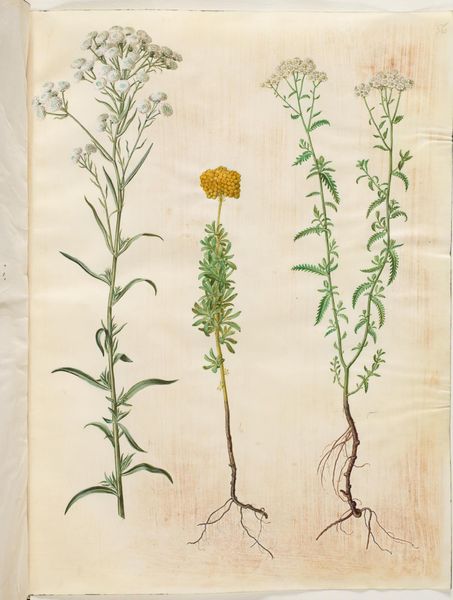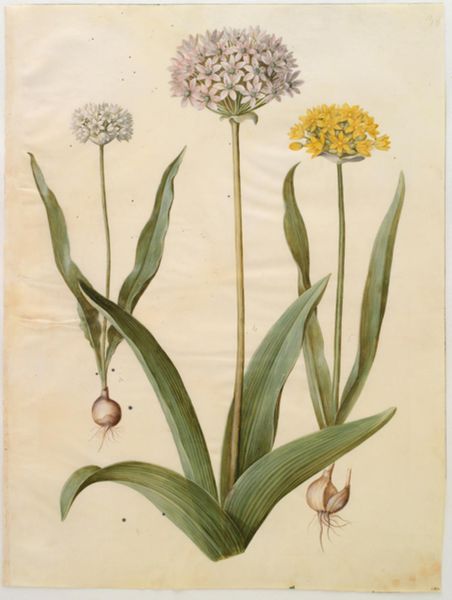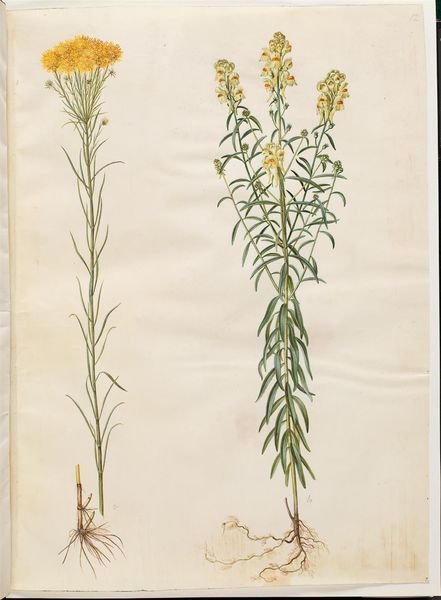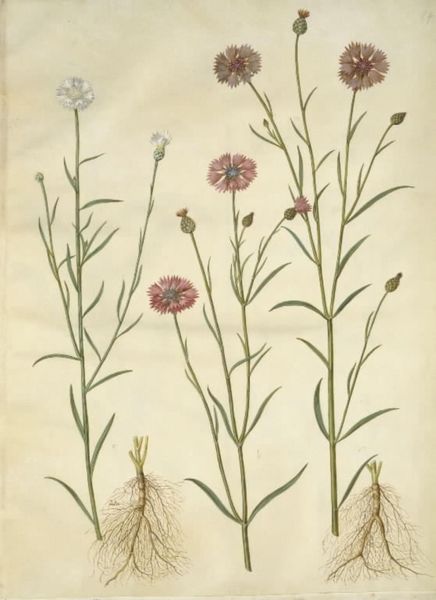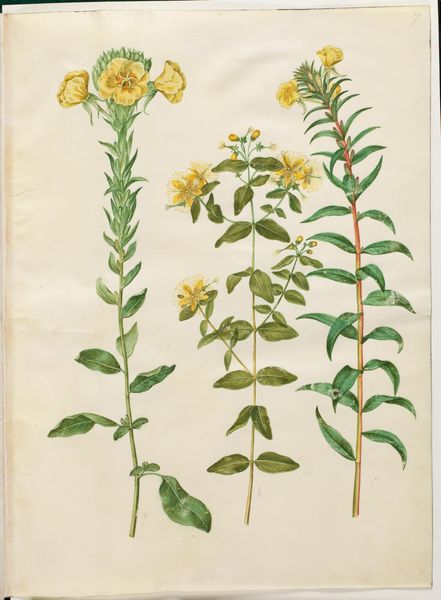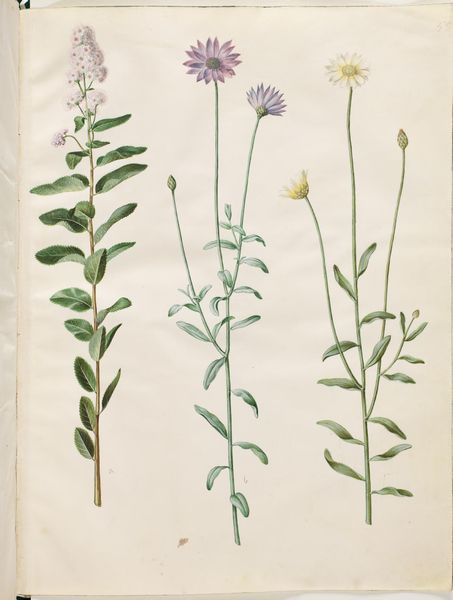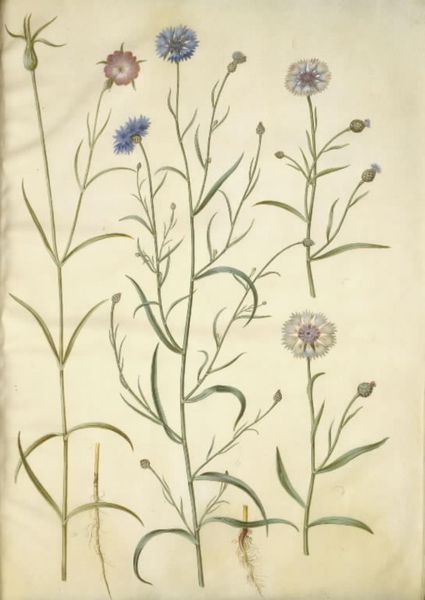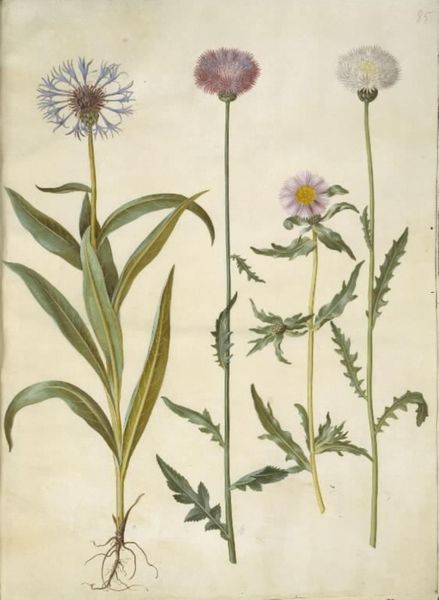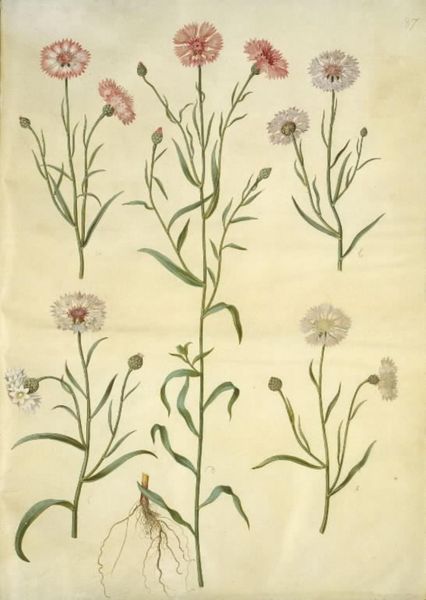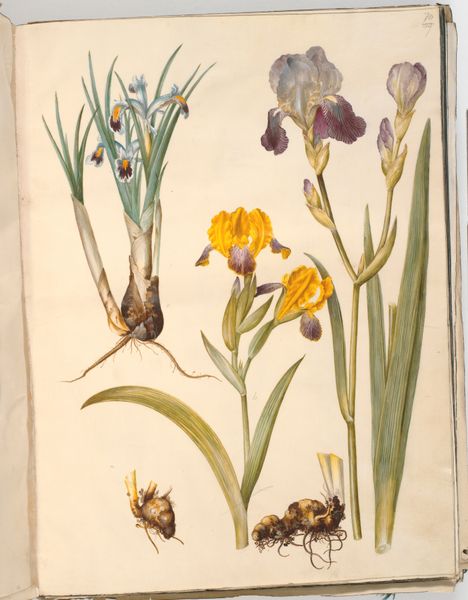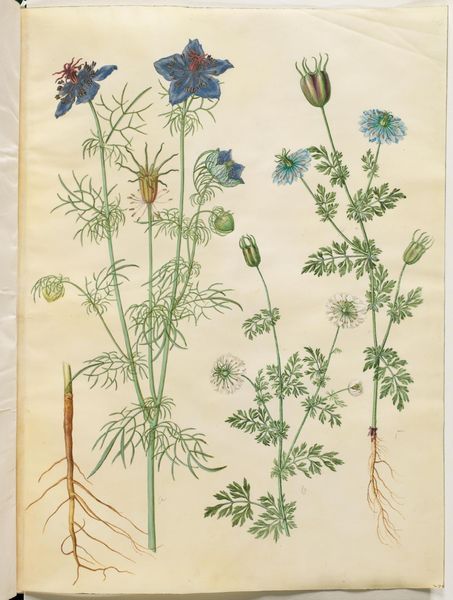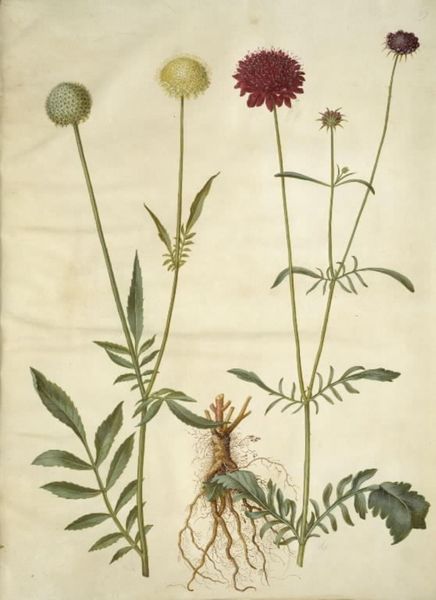
Helichrysum orientale (busk-evighedsblomst); Helichrysum Stoechas (stinkende evighedsblomst); Anaphalis margaritacea (almindelig perlekurv) 1649 - 1659
0:00
0:00
drawing, gouache
#
drawing
#
gouache
#
11_renaissance
#
botanical drawing
#
academic-art
#
realism
Dimensions: 505 mm (height) x 385 mm (width) (bladmaal)
Curator: This exquisitely detailed drawing, dating from between 1649 and 1659, showcases three specimens: Helichrysum orientale, Helichrysum Stoechas, and Anaphalis margaritacea. Hans Simon Holtzbecker rendered this botanical study with remarkable realism using gouache on paper. What's your initial take on this, Editor? Editor: There's an almost uncanny stillness about it, isn't there? It feels less like a drawing and more like pressing dried specimens onto the page. The stark white background throws the botanical subjects into high relief, accentuating the textures. Curator: The artist's choice of gouache allowed for precise color rendering and opacity, necessary for capturing the subtle nuances of the plant matter. One can almost feel the papery texture of the everlastings; Holtzbecker clearly intended a mimetic display of botanical form, but there is something beyond a naturalistic study occurring here. Consider the social status implied by his exquisite materials. Editor: Yes, look at how Holtzbecker painstakingly depicts each vein, each tiny imperfection on the leaves. And how he uses color; for instance, in that one Helichrysum, there's a play with sunny yellows to signal, I think, a sort of immortality and lasting vitality, playing on the symbolic weight of everlastings. Curator: It's intriguing to consider the practical aspects. The choice of materials, like the costly gouache, shows this was likely a commission, or at least intended for a wealthy patron, thus influencing the type of labor afforded to produce it, elevating botanical illustration to high art. This speaks volumes about the accessibility and appreciation of scientific observation during that era. The precision suggests scientific illustration, the refinement elevates it. Editor: Perhaps the stark background emphasizes that isolation, a scientific impulse toward objectivity...but at the same time, there's a certain coldness. Those roots exposed seem fragile; they speak to something about the fleeting quality of beauty itself, or our perception of it, that persists across centuries. The rendering captures their fragile tenacity. Curator: I appreciate your read on its evocative qualities, grounding its symbolic meanings within art history; but as I'm studying it, I'm thinking about its social framework; the materials that were selected to produce such a wonderful display piece. It certainly illuminates aspects of scientific, cultural, and economic exchange occurring in 17th-century Europe. Editor: Absolutely. Whether one emphasizes process or representation, these specimens manage to carry complex symbolic resonance while standing for real objects laboriously brought to life through craft.
Comments
No comments
Be the first to comment and join the conversation on the ultimate creative platform.
